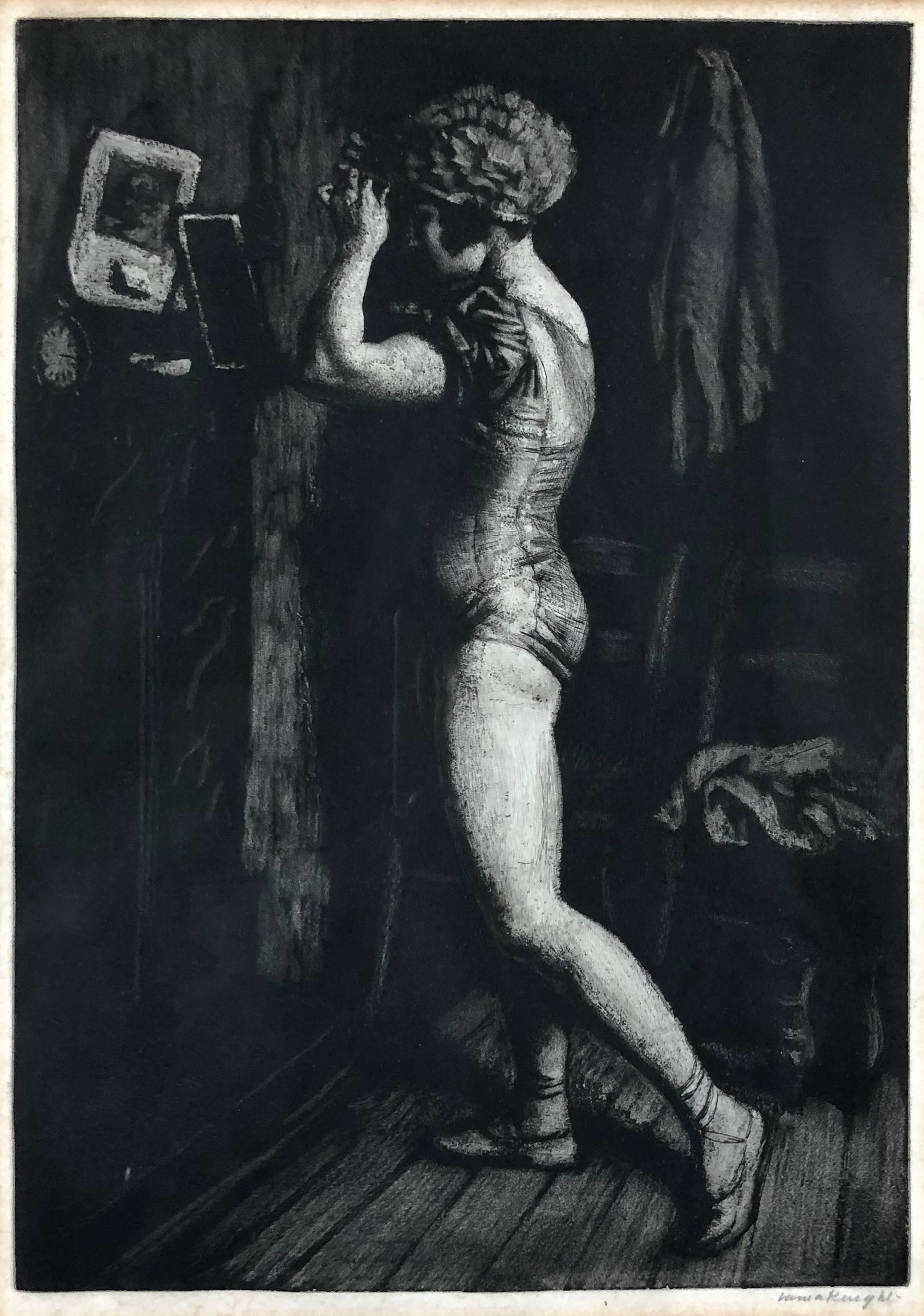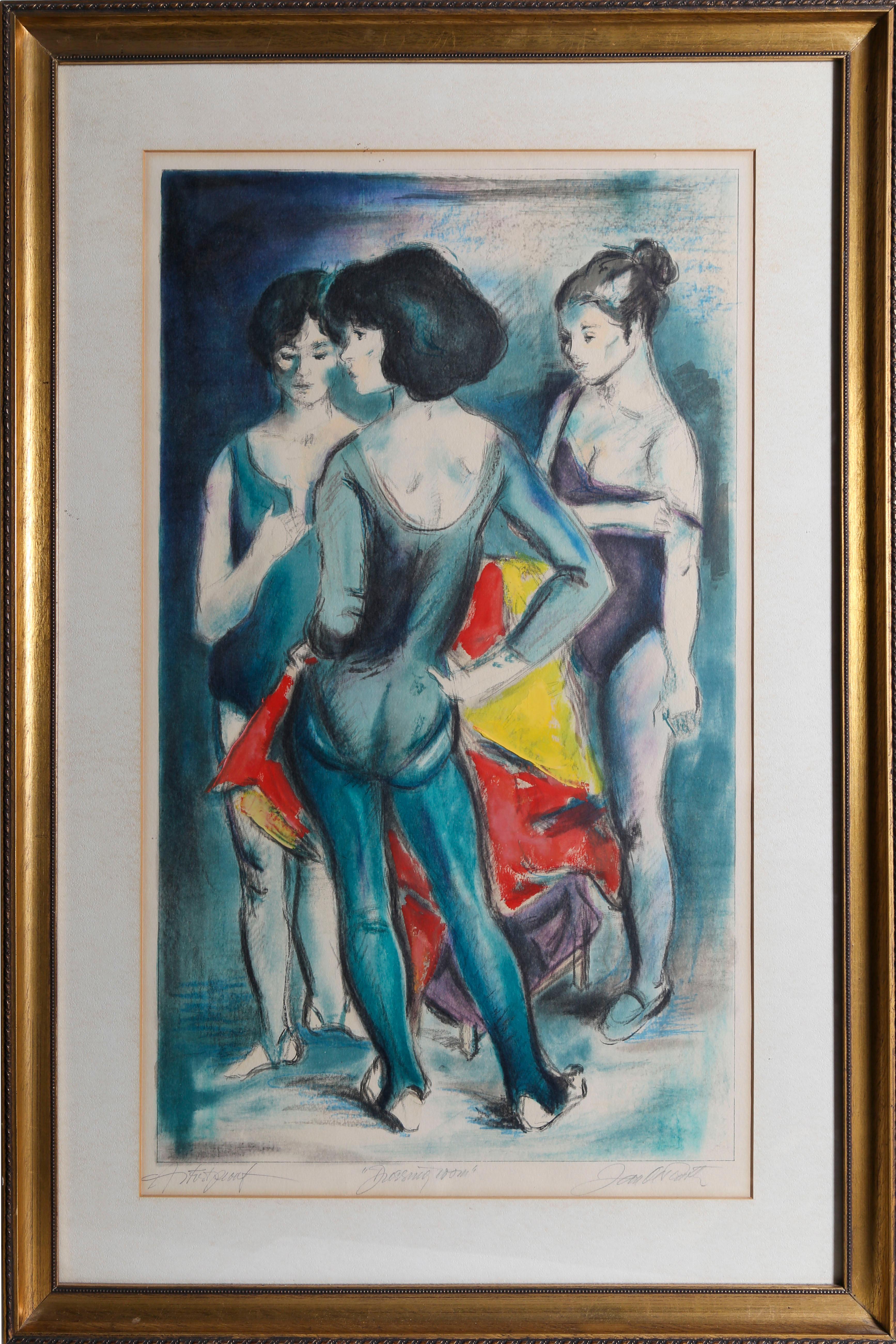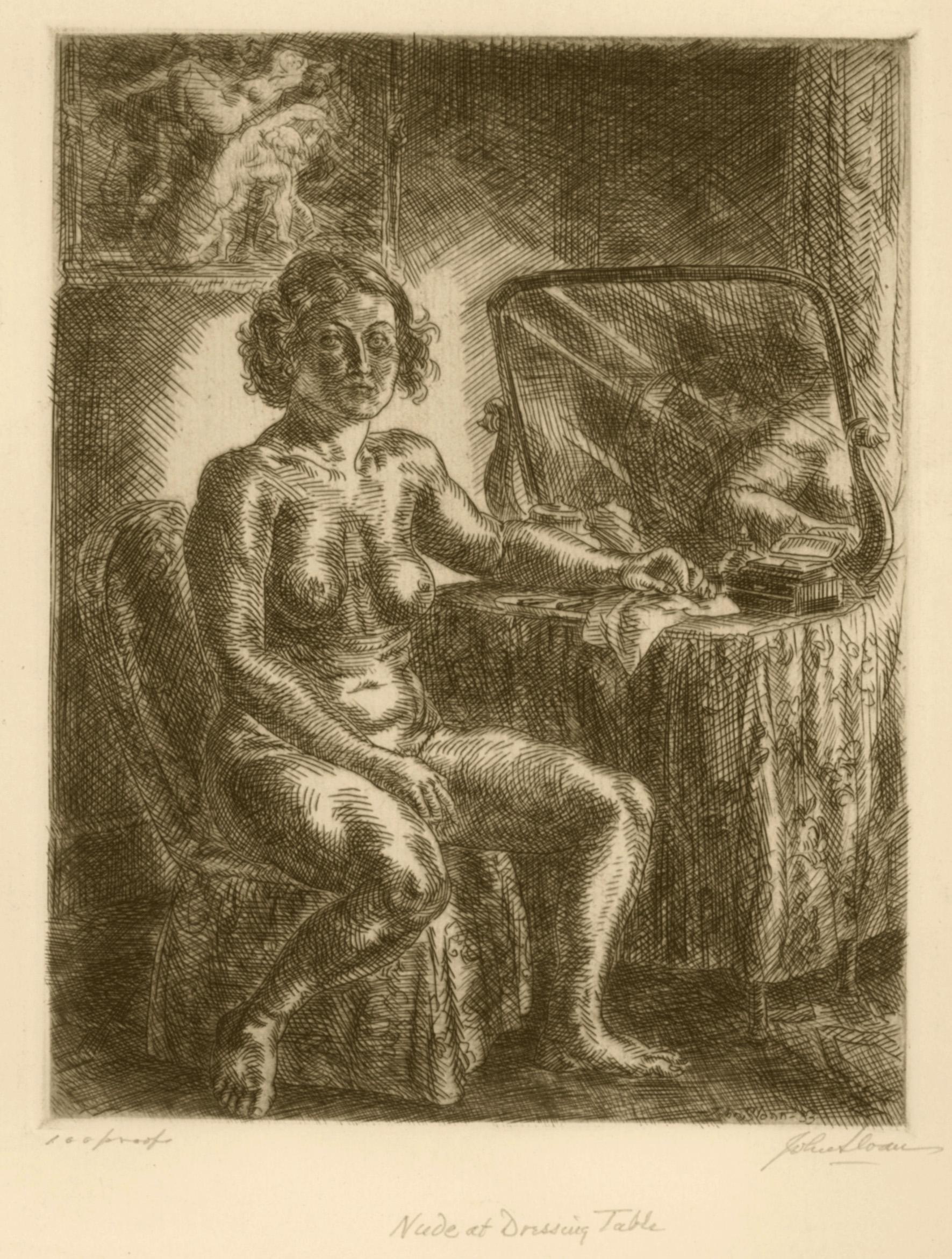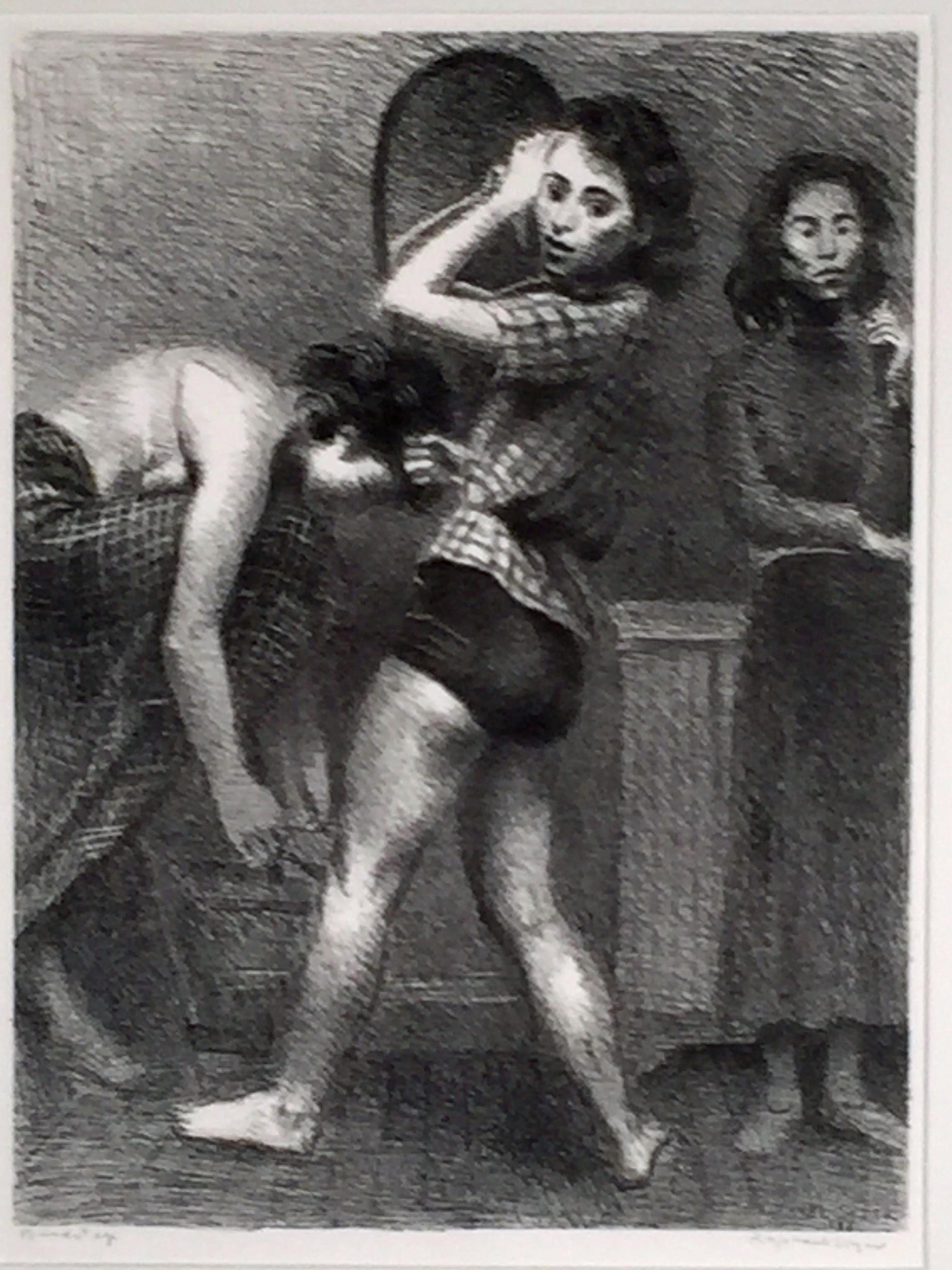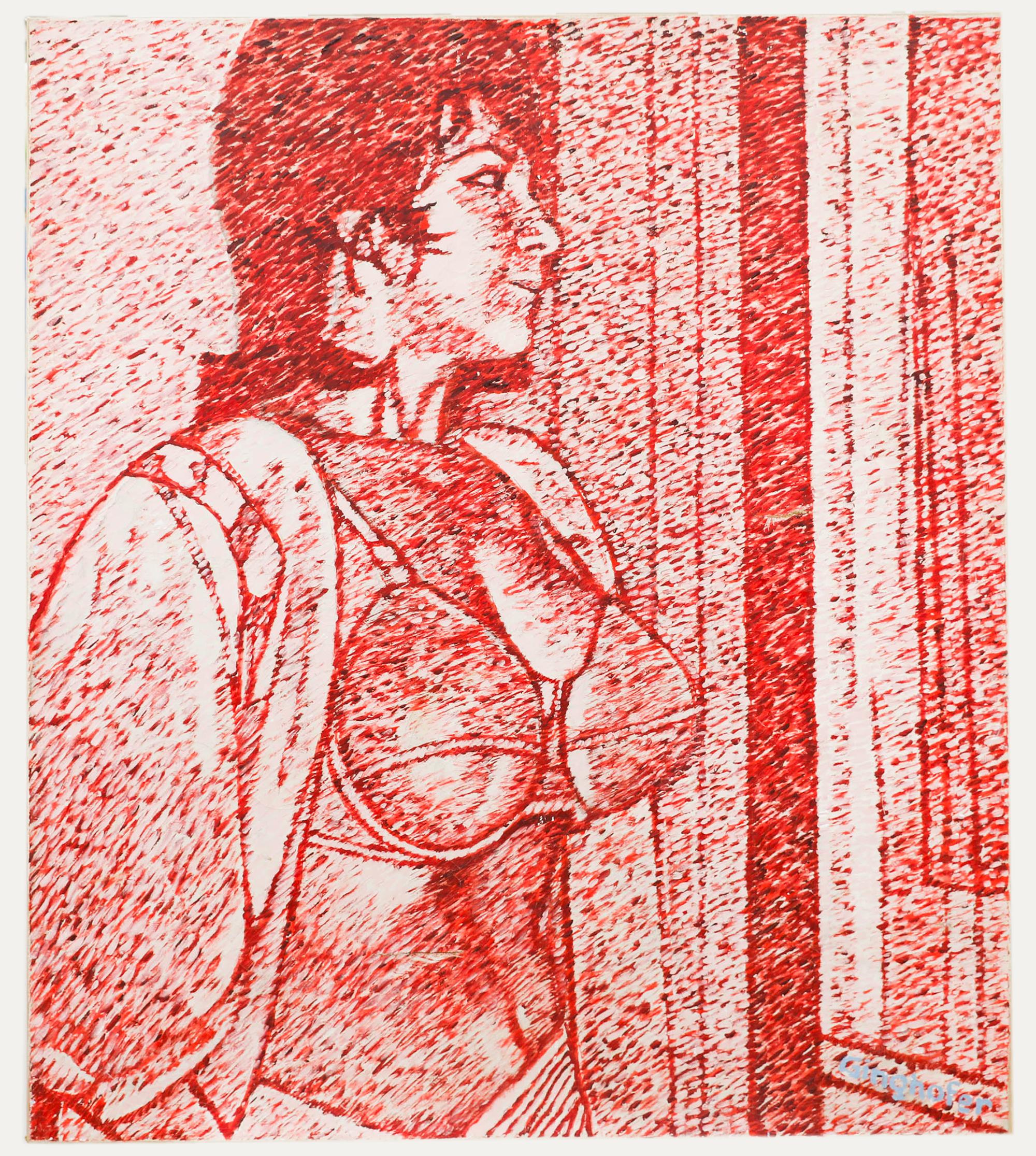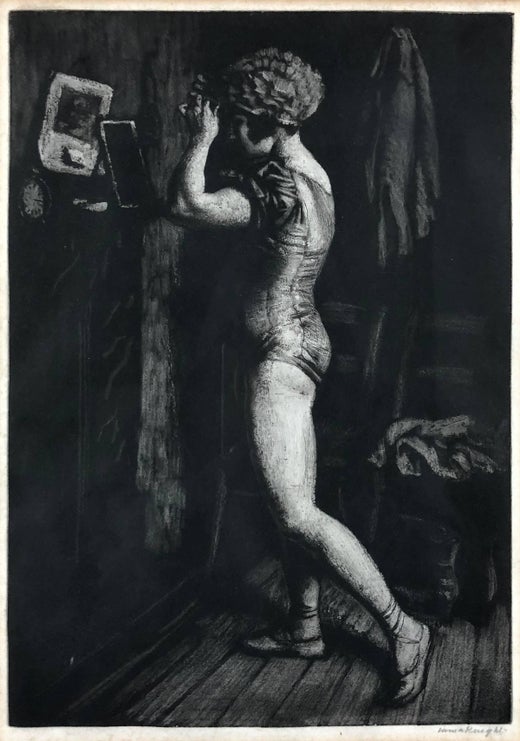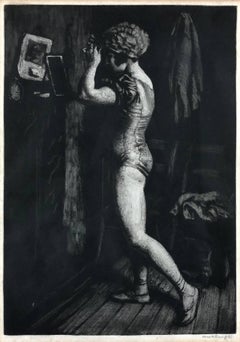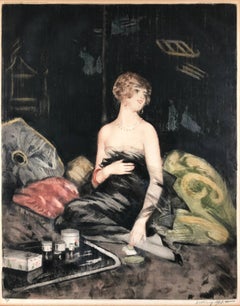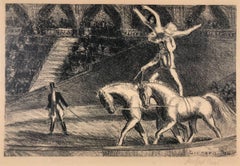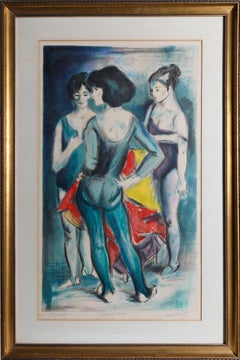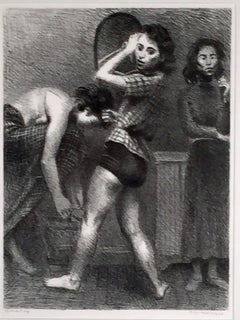Items Similar to The Circus Dressing Room
Want more images or videos?
Request additional images or videos from the seller
1 of 11
Dame Laura KnightThe Circus Dressing Room1925
1925
Price Upon Request
Price Upon Request
Price Upon Request
Price Upon Request
Price Upon Request
Price Upon Request
Price Upon Request
Price Upon Request
Price Upon Request
Price Upon Request
About the Item
Dame Laura Knight (1877-1970)
"The Circus Dressing Room" 1925
Aquatint Engraving
Signed in Pencil Lower Right
Image Size: approx 14 x 9 inches
Framed Size: approx. 23.5 x 18.5 inches
An English impressionist painter noted for genre paintings of the London theatre district, ballet and circus genre. The late 1920s and early 30s are regarded as her most productive time professionally, as she began her circus subjects in 1928 and her depictions of horse racing and gypsies in the 1930s. In 1929, she was made a Dame Commander of the Order of the British Empire, and in 1936, she became the first woman to be elected to the Royal Academy. She was a war artist during World War II, and in 1946, did reporting as an artist on the Nuremberg trials.
Laura Knight had a difficult childhood because her father died shortly after her birth in Derbyshire, and the family struggled financially. She attended the Nottingham School of Art, where she, age 13, first met Harold Knight, age 17, and she was so admiring of his art skills that she decided to use him as her mentor. They became very good friends, and then married in 1903. Four years later, they became part of the artist colony at Newlyn in Cornwall, and she began doing landscape and beach scenes in impressionist style.
In 1913, she did a painting, which was a self-portrait with a nude model, Ella Naper. It was shocking for that era, as a woman artist had never before painted an image of herself with a nude.
Dame Laura Knight did over 250 works during her lifetime, continuing after her husband's death in 1961. She also wrote two autobiographies: Oil Paint and Grease Paint (1936) and The Magic of a Line (1965).
- Creator:Dame Laura Knight (1877-1970, British)
- Creation Year:1925
- Dimensions:Height: 23.5 in (59.69 cm)Width: 18.5 in (46.99 cm)Depth: 1 in (2.54 cm)
- Medium:
- Movement & Style:
- Period:
- Condition:
- Gallery Location:Missouri, MO
- Reference Number:1stDibs: LU74733551481
Dame Laura Knight
Dame Laura Knight (nee Johnston)
British 1877 - 1970 Laura Knight was born in Long Eaton, Derbyshire and studied at the Nottingham School of Art; she was the youngest student at the time being just thirteen. She married the artist Harold Knight and together they set up studios in Staithes, Newlyn and London. She was more flamboyant than her quiet and mild mannered husband and was great friends and painting partner of Alfred Munnings. Her work includes beautiful Seascapes and Beach Scenes depicting Cornwall from 1908 when she first arrived in Newlyn, already a successful artist. The First World War ended their time in Cornwall, though she kept a studio there for many years. Later when she moved to London she became fascinated by the Theatre and Circus. She found new subjects in the Diaghilev Ballet and painted many pictures of the ballet, behind the scenes and rehearsals. Laura Knight went on to be made a Dame for her achievements and was elected to the Royal Academy in 1935. There are many books on Laura Knight and her work and there has been a recent comprehensive exhibition at the National Portrait Gallery, London.
About the Seller
5.0
Vetted Professional Seller
Every seller passes strict standards for authenticity and reliability
Established in 1970
1stDibs seller since 2017
157 sales on 1stDibs
Typical response time: 1 to 2 days
- ShippingRetrieving quote...Shipping from: Missouri, MO
- Return Policy
More From This Seller
View AllThe Circus Dressing Room
By Dame Laura Knight
Located in Missouri, MO
Dame Laura Knight
"The Circus Dressing Room" 1925
Etching
Ed. 20
Signed Lower Right
Image Size: approx. 14 x 10 inches
Framed Size: approx. 23.5 x 17.75 inches
An English impressio...
Category
1920s Realist Figurative Prints
Materials
Aquatint
In the Boudoir
By William Ablett
Located in Missouri, MO
Aquating Engraving
Image Size: Approx 19 x 15.5
Framed Size: Approx. 28.5 x 24.5
William Albert Ablett (1877 - 1937)
Although born to English parents, William Ablett lived in Par...
Category
Early 20th Century Art Deco Figurative Prints
Materials
Engraving, Aquatint
Price Upon Request
Bareback Act, Old Hippodrome
By Gifford Beal
Located in Missouri, MO
Gifford Beal (1879-1956)
"Bareback Act, Old Hippodome" 1950
Lithograph
Signed Lower Right
With original Associated American Artists label verso
image: 6 3/8 x 9 5/8 in. (16.2 x 24.6 cm)
sheet: 12 x 16 in. (30.4 x 40.6 cm)
framed: 17 x 20 in.
Gifford Beal, painter, etcher, muralist, and teacher, was born in New York City in 1879. The son of landscape painter William Reynolds Beal, Gifford Beal began studying at William Merritt Chase's Shinnecock School of Art (the first established school of plein air painting in America) at the age of thirteen, when he accompanied his older brother, Reynolds, to summer classes. He remained a pupil of Chase's for ten years also studying with him in New York City at the artist's private studio in the Tenth Street Studio Building. Later at his father's behest, he attended Princeton University from 1896 to 1900 while still continuing his lessons with Chase. Upon graduation from Princeton he took classes at the Art Students' League, studying with impressionist landscape painter Henry Ward Ranger and Boston academic painter Frank Vincent DuMond. He ended up as President of the Art Students League for fourteen years, "a distinction unsurpassed by any other artist."
His student days were spent entirely in this country. "Given the opportunity to visit Paris en route to England in 1908, he chose to avoid it" he stated, "I didn't trust myself with the delightful life in ParisIt all sounded so fascinating and easy and loose." His subjects were predominately American, and it has been said stylistically "his art is completely American." Gifford achieved early recognition in the New York Art World.
He became an associate member of the National Academy of Design in 1908 and was elected to full status of academician in 1914. He was known for garden parties, circuses, landscapes, streets, coasts, flowers and marines. This diversity in subject matter created "no typical or characteristic style to his work."
Beal's style was highly influenced by Chase and Childe Hassam, a long time friend of the Beal family who used to travel "about the countryside with Beal in a car sketching...
Category
1950s American Realist Figurative Prints
Materials
Lithograph
Bareback Act, Old Hippodrome
By Gifford Beal
Located in Missouri, MO
Bareback Act, Old Hippodrome
By Gifford Beal (1879-1956)
Signed Lower Right
Unframed: 6.5" x 9.5"
Framed: 17.5" x 20"
Gifford Beal, painter, etcher, muralist, and teacher, was born in New York City in 1879. The son of landscape painter William Reynolds Beal, Gifford Beal began studying at William Merritt Chase's Shinnecock School of Art (the first established school of plein air painting in America) at the age of thirteen, when he accompanied his older brother, Reynolds, to summer classes. He remained a pupil of Chase's for ten years also studying with him in New York City at the artist's private studio in the Tenth Street Studio Building. Later at his father's behest, he attended Princeton University from 1896 to 1900 while still continuing his lessons with Chase. Upon graduation from Princeton he took classes at the Art Students' League, studying with impressionist landscape painter Henry Ward Ranger and Boston academic painter Frank Vincent DuMond. He ended up as President of the Art Students League for fourteen years, "a distinction unsurpassed by any other artist."
His student days were spent entirely in this country. "Given the opportunity to visit Paris en route to England in 1908, he chose to avoid it" he stated, "I didn't trust myself with the delightful life in ParisIt all sounded so fascinating and easy and loose." His subjects were predominately American, and it has been said stylistically "his art is completely American." Gifford achieved early recognition in the New York Art World.
He became an associate member of the National Academy of Design in 1908 and was elected to full status of academician in 1914. He was known for garden parties, circuses, landscapes, streets, coasts, flowers and marines. This diversity in subject matter created "no typical or characteristic style to his work."
Beal's style was highly influenced by Chase and Childe Hassam, a long time friend of the Beal family who used to travel "about the countryside with Beal in a car sketching...
Category
20th Century American Modern Animal Prints
Materials
Lithograph
Price Upon Request
Torse de Femme
By Aristide Maillol
Located in Missouri, MO
Aristide Maillol
"Femme de Torse" 1930
Charcoal on Paper
Monogrammed Lower Right
with Photo Certificate of Authenticity
Paper Size: approx 12 x 8 7/8 inches
Framed Size: approx 15.25...
Category
1930s Realist Figurative Drawings and Watercolors
Materials
Charcoal, Archival Paper
Price Upon Request
Head Study, 1930
By John Sloan
Located in Missouri, MO
Head Study, 1930
John Sloan (1871-1951)
Signed Lower Right
10.5" x 9" Unframed
19" x 16.5" Framed
Born in Lock Haven, Pennsylvania, John Sloan became one o...
Category
Early 20th Century Ashcan School Portrait Drawings and Watercolors
Materials
Paper, Conté
Price Upon Request
You May Also Like
Dressing Room, Signed Colorful Modern Art Lithograph by Jan De Ruth
By Jan De Ruth
Located in Long Island City, NY
Standing in a circle, the three women in this print by Jan De Ruth wear leotards with tights as they try on costumes in a dressing room. Showing the behind-the-scenes action of a dan...
Category
1970s Figurative Prints
Materials
Lithograph
Nude at Dressing Table
By John Sloan
Located in Middletown, NY
Sloan was so fond of this composition that he made a painting after the etching ten years after its completion, in 1943. Completed in Santa Fe, the painting is now housed in the perm...
Category
1930s American Modern Nude Prints
Materials
Etching
The Dancer (Anais)
By Gerald Leslie Brockhurst
Located in New York, NY
Gerald Leslie Brockhurst (1891-1978), The Dancer (Anais), 1925, etching, signed lower right and dedicated by the artist (to F.L. Berry, Esq.) lower left [also signed and dated in reverse in the plate lower left]. Reference: Fletcher 52, seventh state (of 7). From the edition of 107. In good condition, with slightest toning, with full margins and as issued and (not archivally) matted, 9 1/4 x 5 1/2, the sheet 15 3/8 x 9 3/8 inches.
Provenance: F. L. Berry (not in Lugt, see note below)
Roddy Willis has graciously provided an extensive background note on this provenance, which I quote from with permission: “Francis Berry...
Category
1920s Realist Figurative Prints
Materials
Etching
BACKSTAGE
By Raphael Soyer
Located in Portland, ME
Soyer, Raphael. BACKSTAGE. Cole 36. Lithograph, 1935. 15 1/4 x 11 1/2 inches. Editon of about 30. In excellent condition. Rare. Nicely framed
Category
1930s Figurative Prints
Materials
Lithograph
Raymond Ginghofer - 20th Century Oil, The Dressing Room
By Raymond Ginghofer
Located in Corsham, GB
A large scale, expressive study depicting a scantily dressed woman in an interior. The artist captures the scene entirely in hues of pink, using expressive brushwork to create a text...
Category
20th Century Nude Paintings
Materials
Oil
AFTER THE BATH Signed Lithograph, Interior Scene, Nude Woman, Realist Drawing
By Raphael Soyer
Located in Union City, NJ
AFTER THE BATH is an original hand drawn (not digitally or photo reproduced) limited edition lithograph by the artist Raphael Soyer - Russian/American Social Realism Painter, 1899-19...
Category
1970s Realist Portrait Prints
Materials
Lithograph
